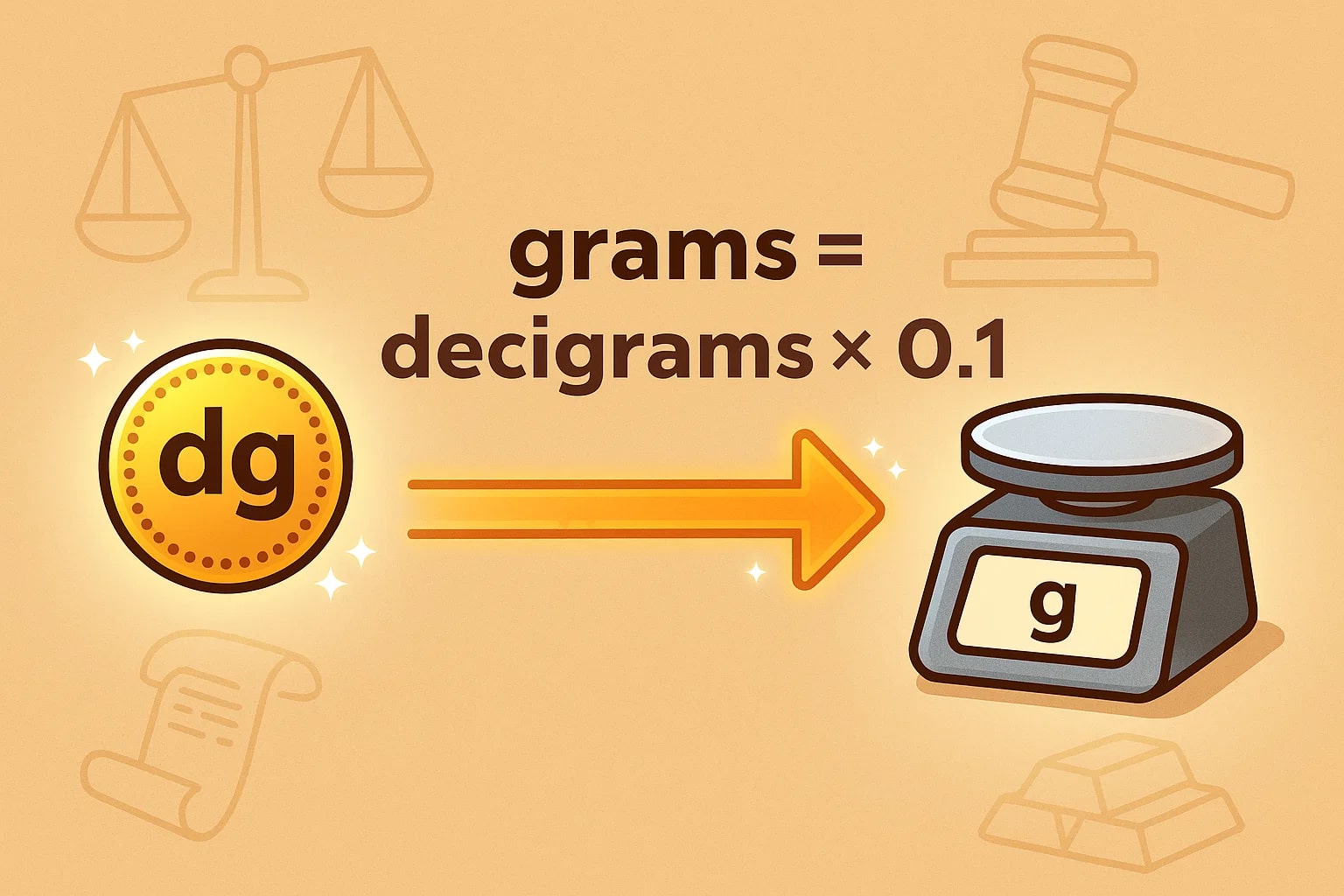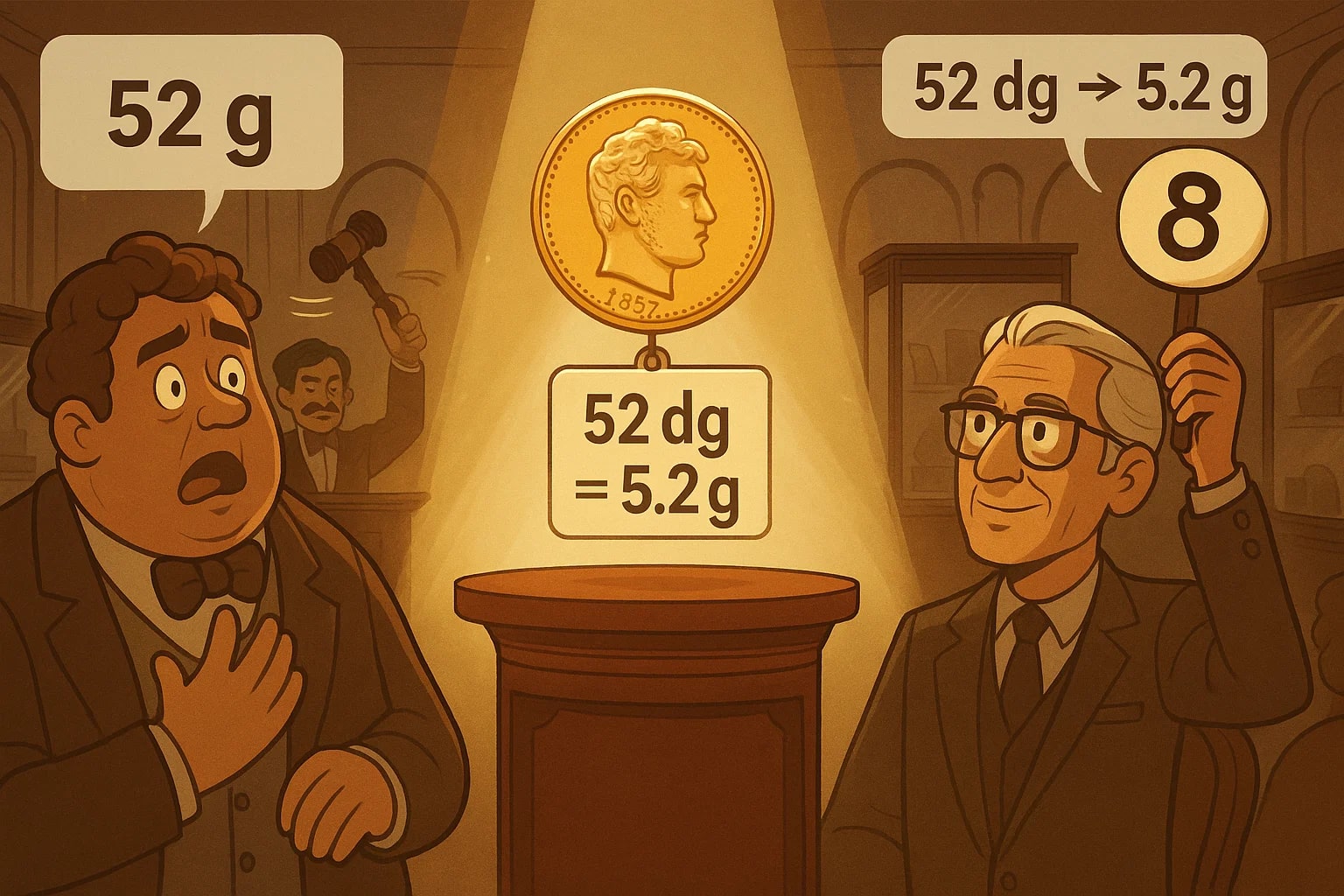decigram to gram – How to convert dg to g
Converting decigram to gram may seem like a small adjustment, but in industries that rely on accuracy, it can make all the difference. From collectibles to culinary arts, shifting between dg and g ensures clarity, fairness, and precision.
What is a Decigram (dg)?
A decigram is one-tenth of a gram:1 dg = 0.1 g
It’s ideal for situations where measuring in full grams would be too coarse, but milligrams would be unnecessarily detailed. Jewelers, scientists, and specialty chefs often use decigrams to balance accuracy with efficiency.
What is a Gram (g)?
A gram is a core metric unit of mass in the International System of Units (SI).1 g = 10 dg
It’s the most common weight unit for everyday items, but converting to decigrams provides finer precision in technical and high-value fields.
How to convert decigram to gram
The formula is simple:
grams = decigrams × 0.1
Example: A gold coin weighing 45 dg is 45 × 0.1 = 4.5 g.
The reverse conversion is just as easy:
decigrams = grams × 10
Example: A silver medallion of 3.2 g is 3.2 × 10 = 32 dg.

The Weight Converter is your go-to for quick decigram-to-gram results and other weight conversions. For non-weight measurements, head to our Conversion Tools.
Do you know?
-
Decigram fact: In gourmet coffee competitions, elite baristas adjust grind size and measure coffee grounds in decigrams to maintain flavor consistency across multiple brews.
-
Gram fact: In international gemstone markets, grams remain the universal weight reference, even when items are initially weighed in smaller units like decigrams.
The Antique Gold Coin Sale: Precision in History
At a prestigious numismatic auction, a rare 19th-century gold coin drew the attention of collectors worldwide. Cataloged at 52 dg, the coin’s description was accurate — but one bidder mistakenly read the listing as 52 g, imagining a much heavier and more valuable piece.
The error nearly sparked an overbid that could have cost thousands. Fortunately, a seasoned collector caught the mistake, converted the weight to 5.2 g, and adjusted their offer accordingly. That knowledge not only saved money but also won them the coin at a fair price.
In the antique coin world, weight isn’t just about metal content; it’s proof of authenticity. Even a fraction of a gram — or a single decigram — can distinguish a genuine piece from a counterfeit. That’s why auction houses often use decigrams in their catalogs but settle transactions in grams: the combination gives both precision and standardization.

Gold Worth Its Weight in Numbers
The decigram may sit quietly between the gram and the milligram, but in specialized trades, it carries authority. From rare coins to delicate spices, knowing the shift from 1 dg to 0.1 g is more than a math exercise — it’s the safeguard of value, authenticity, and trust. In the hands of a skilled appraiser or collector, those numbers tell a story far richer than their size.

